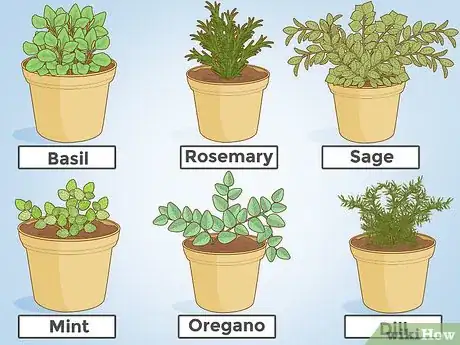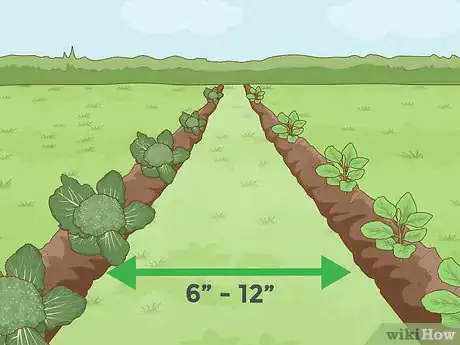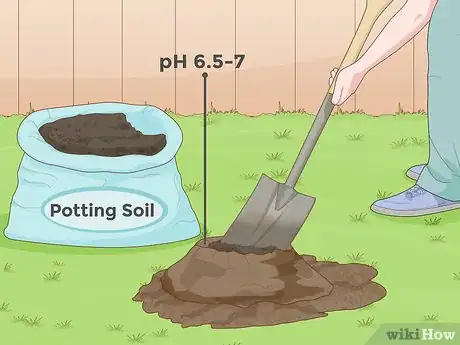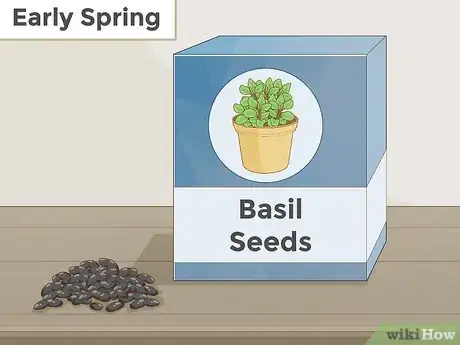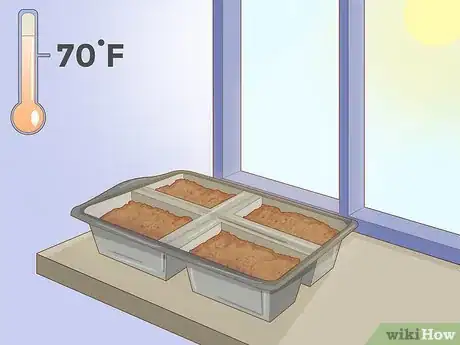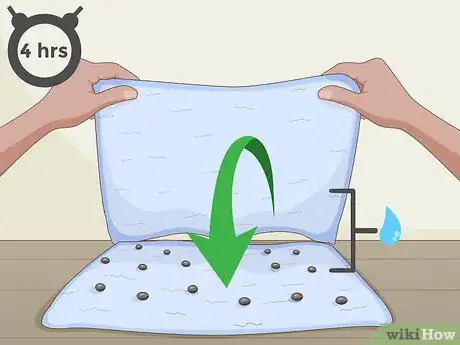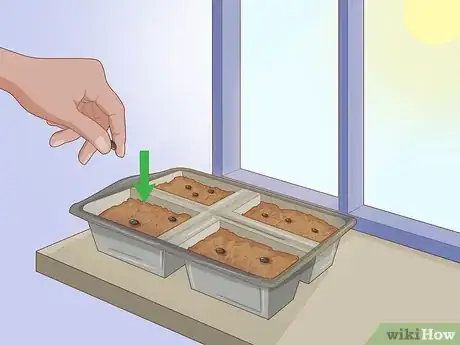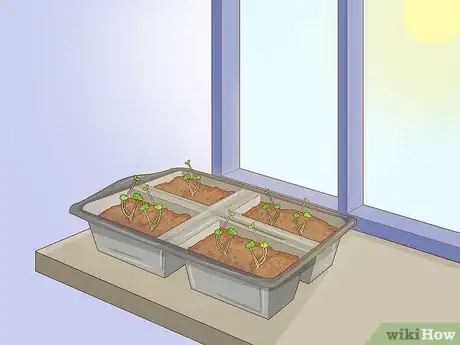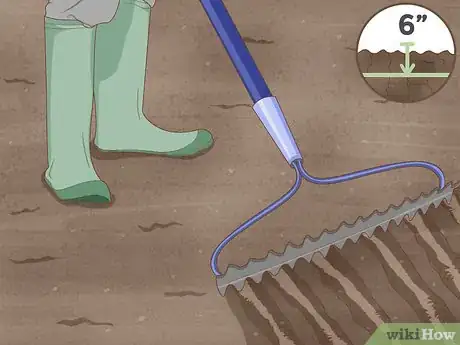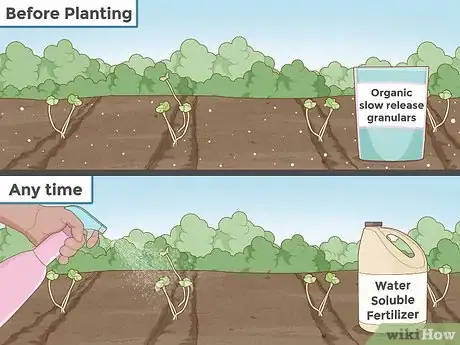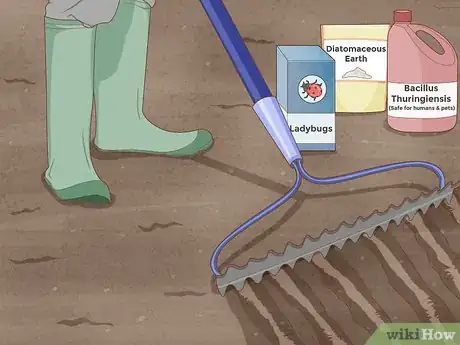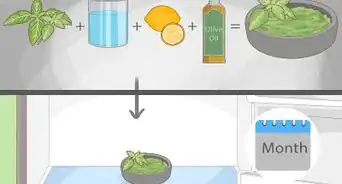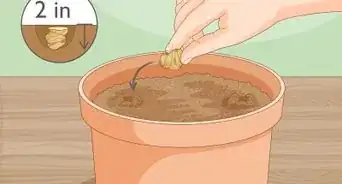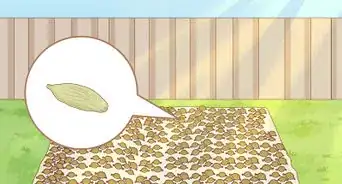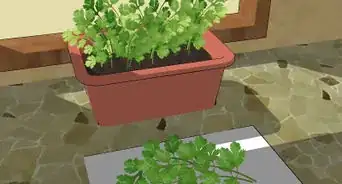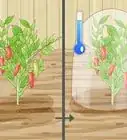This article was co-authored by Chai Saechao. Chai Saechao is the Founder and Owner of Plant Therapy, an indoor-plant store founded in 2018 based in San Francisco, California. As a self-described plant doctor, he believes in the therapeutic power of plants, hoping to keep sharing his love of plants with anyone willing to listen and learn.
There are 11 references cited in this article, which can be found at the bottom of the page.
This article has been viewed 28,700 times.
If you love to season your cooking with fresh herbs, growing your own is an inexpensive and rewarding option. Herbs are unfussy plants that can grow indoors or outdoors, in pots or in the ground - all you need is a warm, sunny spot and a few basic supplies. Gather your supplies, start some seedlings, and plant and care for your new herbs.
Steps
Getting Started
-
1Choose herbs to grow. What herbs do you like to use in your cooking? When choosing what herbs to grow, start by thinking about your own preferences. Since herbs are easy and fun to grow, you might want to try your hand at growing an herb or two that you wouldn't normally buy at the grocery store. When you have a few in mind, buy packets of seeds at your local nursery or online.[1]
- Basil, dill, sage, rosemary, thyme, oregano and mint are wonderful herbs that are used in many cuisines. If you'd like to grow a variety of herbs, these would make a good foundation for an herb garden. You can also grow an herbal tea garden.
- If you're planning on growing your herbs outside, you'll need to take your region's climate and soil properties into account. Determine what regional growing zone you fall into and make sure the herbs you pick out are able to thrive in your area.[2]
-
2Decide where to grow the herbs. Herbs are easy to grow both outdoors and indoors. You can also choose between planting them directly in the ground or in a growing container. Most herbs need plenty of direct sunlight, although some need only partial sunlight. It's best to research which herbs suit which conditions before planting.
- If you're growing herbs as part of your vegetable garden, plant to separate the herbs from the vegetables with about 6–12 inches (15.2–30.5 cm) of space.
- You can grow herbs in separate pots, or buy a large pot and grow several types of herbs together.
Advertisement -
3Get potting soil. Soil composition is an important factor for successful herb gardening. Herbs thrive in a somewhat neutral pH (between 6.5 and 7), but soil need not be especially fertile. In fact, if it is too rich, growth will be rampant and flavor, diluted. More important than fertility is drainage. The soil should be loose and crumbly so that it drains well.[3]
- If you're starting your herbs from seed, look for a seed starter potting soil that has not been enriched with extra nutrients, since seeds contain the nutrition they need to sprout and take root.
- For older seedlings, choose potting soil that hasn't been treated with pesticides.
- You can mix commercial soil with compost to help the herbs grow strong and healthy.
Starting Seeds
-
1Start in early spring. The best time to start seeds is when temperatures are still cool and the growing season has yet to get underway. This gives the seeds time to sprout and become established; they should be ready for planting when the temperature begins to rise.[4]
- If you can, wait until after the last frost.
-
2Prepare seed containers. Herb seeds can be started in any type of small container, like an old egg carton, yogurt cups, or containers available for purchase at the nursery. Label the containers so you'll know what seeds you're planting in which. Fill each one with potting soil, then dampen the soil with a bit of water.[5] Place the containers in a sunny area with a steady temperature around 70 degrees. At this early stage the seeds should not get hours of direct sunlight, or they may overheat.[6]
- Even if you plan to grow your herbs outdoors, it's easier to start the seeds inside, where you can control the water and temperature.
- Most herbs need a humid environment to germinate. If you live in an area where the air is very dry, cover the seed pots lightly with plastic wrap. Don't wrap them too tightly, though - the seeds need air flow to germinate.
-
3Soak the seeds. This step helps to get the seeds ready to germinate. Place the seeds in an even layer between two damp paper towels. Let them soak for about 4 hours on the day you are going to plant them.
-
4Plant the seeds. Check the seed packages to determine how each type of herb should be planted. Some just need to be scattered evenly across the surface of the soil, while others won't germinate unless they are buried under the surface. Over the next few weeks, the seeds will germinate and begin to sprout and grow leaves. Keep the temperature and sunlight steady, and make sure the soil never gets the chance to dry out.
-
5Thin the seedlings. Once the seedlings have grown leaves, you'll need to remove some of them from the pots so that the stronger ones have room to grow. Take out the less developed seedlings and leave about an inch of space between the remaining plants.[7]
Planting Herbs
-
1Prepare the planting bed. Use a garden rake to loosen the dirt and rake in the soil mixture you purchased for the herbs to a depth of about 6 inches (15.2 cm). Sprinkle water over the soil to moisten it. Dig holes several inches apart in preparation for planting the herbs.
- If you're planting the herbs in pots, determine how many will fit in each one. Many herbs get quite large as they grow, so you may not want to plant more than 2 - 3 seedlings in each container.
- You can add a bit of fertilizer to the soil, but again, don't over-fertilize or the herbs won't thrive.
-
2Plant the seedlings. The herbs are ready to plant when they are well-established and have sprouted several mature leaves. Plant them when outdoor temperatures are above 50 degrees, and the chance of frost is gone. Carefully lift the seedlings from the pots, loosen their roots, and plant them in the ground. Pat soil around the base of the stems, then dampen the area with water.
- If you're planting the herbs outside, it's a good idea to transition them to outdoor temperatures by allowing them to "harden off" in a garage or other covered outdoor space for a few days before you plant them in the ground.
-
3Care for the herbs. Now that the herbs are established, you have only to care for them by making sure they consistently get enough sunlight and water.[8] Pay attention to the moisture level of the soil, and never let it get dried out. Your herbs will grow healthy and strong, and soon it will be time to harvest them.
-
4Fertilize your herbs. One good way to keep your herbs healthy and happy is to add fertilizer to the soil. You can sprinkle fertilizer around the bases of your plants after they are already established, or add slow-release fertilizer to the soil before planting. Container-grown herbs will need more fertilizer than those grown in the ground. A few good fertilizer options are:[9]
- Organic slow-release granules. It is best to add these to the soil before planting.
- Water-soluble fertilizer. This type of fertilizer can be added to your plants’ soil at any point during the growing season. It does not last as long as slow-release granules, so you may wish to give your herbs several treatments.
- Compost. You can make your own natural fertilizer by composting your food and yard waste. Good compost material includes things like grass clippings, dead leaves, fruit and vegetable waste, stale bread, egg shells, and coffee grounds.
-
5Use natural pest control methods. If your herb garden is troubled by pests, you may need to apply some gentle pesticides or repellents to your plants. Try one or a combination of these safe and natural pest control methods:[10]
- Bacillus thuringiensis, or Bt, is a type of bacterium that naturally occurs in soil and contains insecticidal compounds. A variety of Bt-based pesticide products are available on the market. Bt is safe for humans and pets.[11]
- Diatomaceous earth is a natural rock powder that kills slugs and many insects. Sprinkle a little of it around the bases of your plants to create a barrier, or puff some onto the leaves with a puffer bottle.
- Ladybugs are attractive, harmless to your plants, and happy to chow down on aphids and other small insect pests. Buy a box of ladybugs at your local garden center and turn them loose in your herb garden. Spray your plants with a dilute sugar-water solution first to make them more appealing to the ladybugs.
Expert Q&A
-
QuestionWhat do I need to do differently if I grow my herbs indoors?
 Chai SaechaoChai Saechao is the Founder and Owner of Plant Therapy, an indoor-plant store founded in 2018 based in San Francisco, California. As a self-described plant doctor, he believes in the therapeutic power of plants, hoping to keep sharing his love of plants with anyone willing to listen and learn.
Chai SaechaoChai Saechao is the Founder and Owner of Plant Therapy, an indoor-plant store founded in 2018 based in San Francisco, California. As a self-described plant doctor, he believes in the therapeutic power of plants, hoping to keep sharing his love of plants with anyone willing to listen and learn.
Plant Specialist If you're going to grow herbs inside, you have to be more cautious about how you care for herbs indoors since they can be kind of delicate. Many of them require a lot of sun and you generally have to keep the soil moist all of the time.
If you're going to grow herbs inside, you have to be more cautious about how you care for herbs indoors since they can be kind of delicate. Many of them require a lot of sun and you generally have to keep the soil moist all of the time. -
QuestionWhat herbs can you grow in your kitchen?
 Maggie MoranMaggie Moran is a Professional Gardener in Pennsylvania.
Maggie MoranMaggie Moran is a Professional Gardener in Pennsylvania.
Home & Garden Specialist If you're using small and manageable pots, virtually every herb can be at least started in your kitchen, though many can be grown completely inside your home without ever needing to be replanted outside.
If you're using small and manageable pots, virtually every herb can be at least started in your kitchen, though many can be grown completely inside your home without ever needing to be replanted outside. -
QuestionWhat herbs are easy to grow?
 Maggie MoranMaggie Moran is a Professional Gardener in Pennsylvania.
Maggie MoranMaggie Moran is a Professional Gardener in Pennsylvania.
Home & Garden Specialist Most herbs are very easy for beginners to grow. There are only a few herbs that are classified as difficult to grow and maintain. These include lavender, bay leaf, and rosemary.
Most herbs are very easy for beginners to grow. There are only a few herbs that are classified as difficult to grow and maintain. These include lavender, bay leaf, and rosemary.
Warnings
- Some types of herbs, such as garlic, may be toxic to pets. If you have pets and plan to grow herbs in your home or garden, find out if they are safe for your pets. Make sure that your pets do not have access to any toxic herbs.[12]⧼thumbs_response⧽
References
- ↑ https://homesteadandchill.com/grow-herbs-101-kitchen-herb-garden/
- ↑ https://www.cabinlife.com/articles/gardening-growing-herbs
- ↑ https://heeman.ca/garden-guides/10-herb-gardening-mistakes/
- ↑ https://aces.illinois.edu/news/starting-herb-seeds-indoors
- ↑ Chai Saechao. Plant Specialist. Expert Interview. 20 February 2019.
- ↑ https://www.vpr.org/programs/2016-12-29/vermont-garden-journal-6-tips-for-starting-a-windowsill-herb-garden
- ↑ https://gardenerspath.com/plants/vegetables/start-annuals-indoors
- ↑ Chai Saechao. Plant Specialist. Expert Interview. 20 February 2019.
- ↑ http://savvygardening.com/fertilizer-for-herb-gardens/
About This Article
To grow your own herbs, start by choosing the herbs you like to cook with, such as basil, sage, rosemary, and thyme. Next, decide if you want to grow your herbs indoors or outdoors. If you’re growing them indoors, plant each herb in a separate pot or grow several types together in 1 pot. As part of an outdoor garden, plant the herbs 6 to 12 inches away from the vegetables to ensure that they get plenty of sunlight. Check the soil daily, and water your herbs whenever the soil feels dry to the touch. For more advice, including how to prepare your seeds for planting, keep reading.
